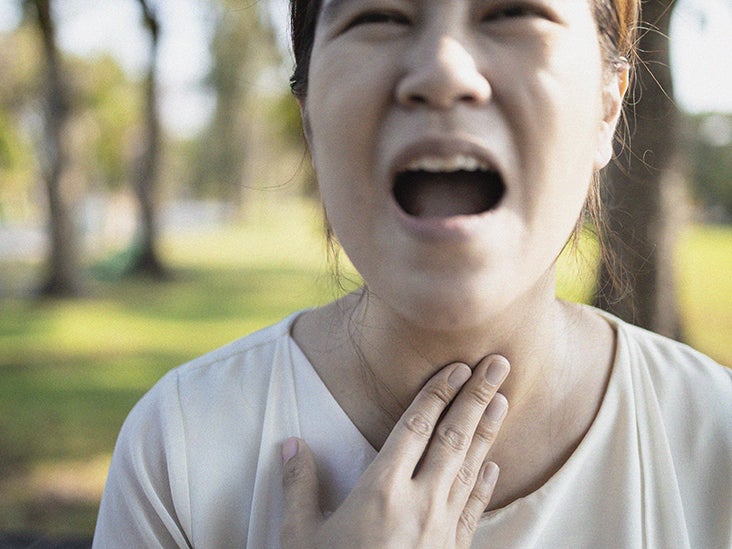

Every time you speak, the vocal folds touch each other hundreds and thousands of times. If you use your voice for long periods of time, longer than what your voice is conditioned to right now, you can experience hoarseness of voice. Generally speaking, there are two main reasons why you may end up with a hoarse voice in the evening: Two Reasons of Hoarse Voice Reason #1: Voice Use for Too Long

But sometimes, post-nasal drip or other medical conditions can cause hoarseness that gets worse throughout the day because the tissue of the vocal folds gets more and more irritated.

Worsening hoarseness with voice use usually does not indicate a structural change on the vocal folds, like vocal nodules or cysts. For example, the muscles in and around the larynx squeeze or constrict, they get tired and therefore they are unable to make a clear tone. That strained, raspy, husky, rough or breathy quality of voice that gets worse as the day goes by usually indicates a functional problem. So, why is this happening to you? Causes of Hoarseness Speaking shouldn’t feel painful and you shouldn’t end up with a hoarse voice at the end of the day even if you talked all day. If you experience hoarseness occasionally in the evenings, or if your voice gets hoarse every day after talking, you should know that it does not have to be that way. Here is an example of that.If your voice gets hoarse at the end of the day, let me tell you why this is happening and what you should be doing about it. Paralysis could effect only one side completely resulting in lack of movement and a breathy voice. After 2 weeks, his voice completely resolved with normal vocal cord appearance and functioning. He was treated with a prednisone burst and taper and instructed to limit his voice use. Given the tremendous effort he was using to talk, mild traumatic laryngitis (swelling and redness) was present from effortful vocalization. They do move together and apart so it is not a complete paralysis. Note that the vocal cords are flopping around without any smooth symmetric vibration indicating a partial vocal cord paralysis (specifically, the thyroarytenoid muscle). The strobe video exam revealed that he had bowing of both the true vocal cords with laxity on phonation. Apparently, his hoarseness started during a viral upper respiratory infection a few weeks before this visit. If you listen to this patient's voice (49 year old male), it is quite breathy with a harsh quality to it. Note instrument passing through the mucosal bridge at time of surgery.Įxample 8: Thyroarytenoid Muscle Paralysis (Partial Vocal Cord Paralysis) Picture is shown where an instrument was placed through the mucosal bridge. Treatment is excision.Īt time of surgical excision, a mucosal bridge was found on the opposite right true vocal cord which was unanticipated. At the upper range, her voice becomes diplophonic where the anterior vocal cords (in front of the mass) vibrates at a different frequency than the back. Given the large size of the abnormality, she has a raspy voice throughout her vocal range. It was thought that there may have been a cyst also present, but none was found at time of surgery.

Some amount of vocal cord is sweling around the varix.
#Hoarse voice free#
There is a blood vessel varicosity near the free edge of the left vocal cord. The video reveals several abnormalities involving her left true vocal cord. Her voice, even at normal speech pitch levels contain onset delays and pitch breaks. Click here to read more about muscle tension dysphonia.Įxample 7: Vocal Cord with Enlarged Blood Vessel and Mucosal Bridge The basis of voice therapy will be to start where the voice is clear and figure out a way for the patient to bring that clarity to the lower pitches. However, as the pitch decreases, the voice becomes raspy. Note that at the upper pitches, the patient's voice is clear. Sometimes, the tension is so strong that the person does not have a voice at all ( muscle tension aphonia)! Of note, this disorder is often confused with (but should not be mistaken for) tonic or ADductor spasmodic dysphonia.
#Hoarse voice how to#
This finding provides the basis for how to begin voice therapy to help her "find" her normal speech voice again. However, at higher pitches, the voice clears up and the false vocal cord muscular tension also disappears. Of the false vocal cords to the point they touch in the speech frequencies (plicae ventricularis). In the video, see how there is a significant lateral-lateral squeeze (muscular tension) Your browser does not support the audio element. Your browser does not support the video tag.Įxample 4: Muscle Tension Dysphonia (Lateral Squeeze)


 0 kommentar(er)
0 kommentar(er)
